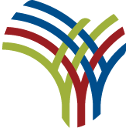Rwanda Basic Education Board (REB) is set to establish five special needs schools across the country in the next five years, in a major step toward enhancing inclusive education. The special schools for children with autism and other severe intellectual challenges will be constructed across all provinces.
ALSO READ: Govt to build five model schools for autistic children
Speaking about the initiative, on March 4, Nelson Mbarushimana, the Director General of REB, said the schools will be designed specifically for students with intellectual disabilities, while also accommodating learners with other special needs.
Here are four things you need to know about the new project:
1. It is a reverse inclusion model
The schools will implement a reverse inclusion model, a teaching strategy that places typically developing students in a classroom with students who have disabilities, ensuring that learners with disabilities receive specialized support while learning alongside their non-disabled peers. The goal is to create an inclusive environment where students can learn together.
According to Flora Mutezigaju, the Deputy Director General of REB, the approach is designed to address the unique challenges faced by children with disabilities.
ALSO READ: Parents decry shortage of 'special schools' for autistic children
"These schools will be dedicated primarily to students with disabilities, providing them with boarding facilities to ensure a stable and supportive learning environment. Meanwhile, non-disabled students will attend classes during the day and return home afterward. This structure acknowledges the additional difficulties children with disabilities face in commuting daily and ensures they receive the consistent care and resources they need to thrive," Mutezigaju said.
2. Special needs students will benefit from adapted digital textbooks
To ensure that students with disabilities receive an education tailored to their needs, REB is transforming traditional textbooks for all subjects into accessible digital formats. This initiative aims to make the learning experience more interactive, inclusive, and accommodating for all students.
"Traditionally, educational textbooks have been available in PDF format, which can be difficult for some students with disabilities to use. Now, REB is introducing interactive learning materials, including audio and video content and sign language integration, making lessons accessible and interactive to learners with disabilities," said Mutezigaju.
"Offline-accessible digital textbooks will allow students to study even without an internet connection. REB has also trained teachers to effectively use these new tools, ensuring that learners with disabilities receive high-quality education and support."
ALSO READ: Activists push for subsidised education for autistic children
3. Friendly infrastructure
According to Mbarushimana, each of the five schools, including one in the City of Kigali, will be strategically located across different provinces and designed to have new and quality infrastructure which will favour children with disabilities and enhance teaching experiences.
Each school will feature smart classrooms tailored to students with disabilities, and dormitories for boarding students, among others. The aim is to create an inclusive, accessible, and supportive learning environment for all, he said.
Twenty resource and assessment centres will also be constructed for national exams and practical tests for learners with disabilities.
4. Project is being fast-tracked
Although the initiative is part of a five-year plan, officials are determined to accelerate its implementation.
"Although the plan is set for five years, we are working to speed up the process and establish these schools sooner than expected. We recognize the urgency of providing quality education to children with disabilities, and we are determined to make this a reality as soon as possible," said Mbarushimana.
"We have already piloted accessible digital textbooks in pre-primary and primary schools, ensuring that teachers are well-trained in using them effectively. These resources, designed last year, are accessible even offline, allowing students and teachers to continue learning without internet limitations," said Mutezigaju.

